Tibet is a land of ancient culture and traditions that have survived into the modern day. The high value Tibetan people place on preserving local traditions is a big part of what makes visiting Tibet such a unique experience. From lifestyle and customs, to food and clothing, here is your ultimate guide to the Tibetan people.
What do Tibetan People Look Like?
Like any group of people around the world there is a lot of diversity among Tibetan people, however there are some features that are common to people from that region. It is not uncommon to see Tibetan people with weathered or sun-darkened skin. This comes from the harsh weather and intense sunlight of the region.
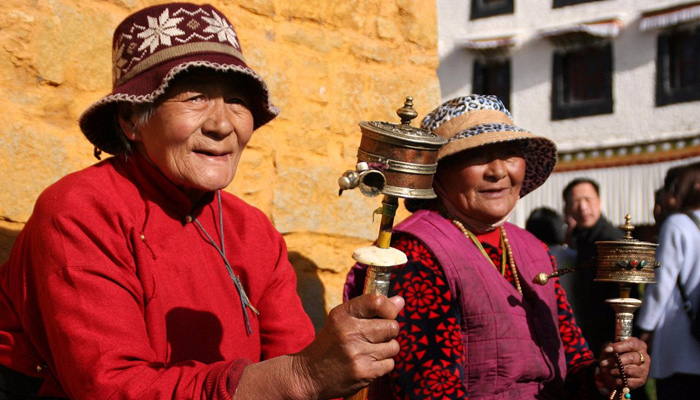 Tibetan people have a distinctive appearance.
Tibetan people have a distinctive appearance.In addition to dark hair and eyes, and epicanthic folds common to many people in Asia, many Tibetan people also have prominent and high cheekbones that give their faces a distinctive appearance.
Tibetan people also have physical characteristics that are influenced by their high-altitude environment, these include increased lung capacity and efficient oxygen utilization that allow them to live comfortably in challenging conditions.
The Rich History of Tibetan People
The history of people in Tibet stretches back thousands of years with evidence of human habitation dating back to the Paleolithic era. Early Tibetan society was nomadic, based around herding animals.
The history of the Tibetan people is an integral part of Chinese history and one of the oldest ethnic groups in China and South Asia. After the establishment of the Tubo Kingdom in the early 7th century, interactions between Tubo and the Tang Dynasty became increasingly frequent. From the 10th to the 16th century, the ancient Tibetan culture flourished.
Where do Tibetan People Live?
The Tibetan Plateau, often referred to as the ‘Roof of the World’, is where Tibetan people primarily live. The plateau spans across parts of China, India, Nepal and Bhutan, but the largest population of Tibetan people reside in the Tibet Autonomous region of China, considered the heartland of Tibetan culture, religion and heritage.
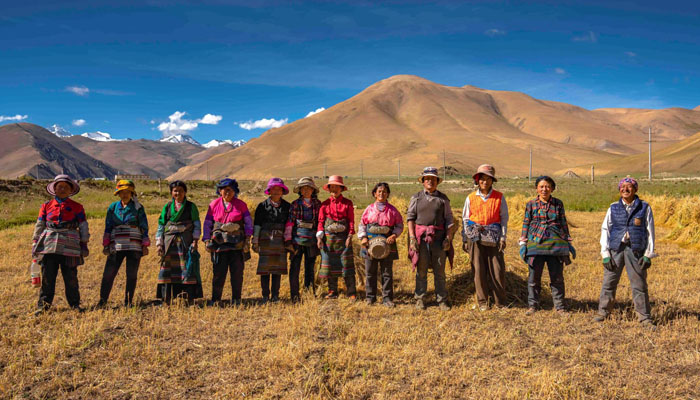 Tibetan Plateau is where Tibetan people primarily live.
Tibetan Plateau is where Tibetan people primarily live.Tibetan communities also exist in various other provinces of China, such as Qinghai, Sichuan, Gansu, and Yunnan. These areas are home to sizable Tibetan populations, and Tibetan culture and traditions are present in these regions as well.
What do Tibetan People Eat?
Traditional Tibetan food is influenced by the harsh local environment and focused on providing hearty and nourishing meals to help with the cold climate and high altitudes.
Two of the more distinctive examples are Tsampa and butter tea. Butter tea is a Tibetan beverage made by mixing tea leaves, butter and salt together. It can be an acquired taste, but is an integral part of Tibetan culture and a great source of energy and warmth when it’s cold. Tsampa is a staple of local cuisine. Made by roasting barley flour and mixing it with butter tea or water to give it a softer consistency, and often eaten with butter tea or yogurt.
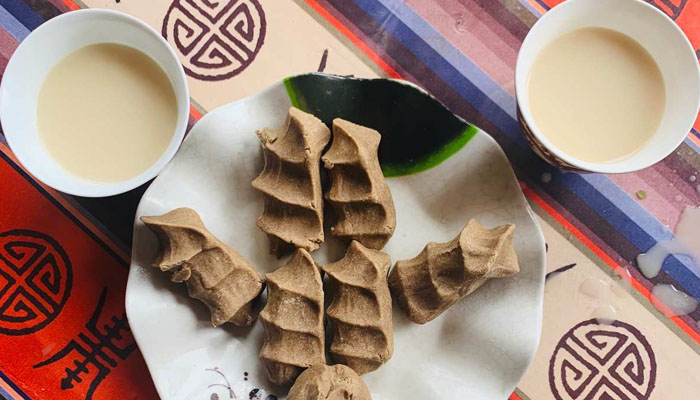 Tsampa and butter tea are common foods of Tibetan people.
Tsampa and butter tea are common foods of Tibetan people.Other hearty and distinctive local foods include momos, a type of dumpling filled with meat, vegetables or cheese and served steamed or fried. Thukpa is a rich noodle soup popular in colder months. It’s made with wheat or rice noodles served in a flavorful broth with vegetables and sometimes meat. Chang, a traditional barley beer, is often served on social occasions and festivals.
Tibetan cuisine makes heavy use of Yak meat and dairy products. Yak meat is served in dumplings, soup, and roasted or stewed in a variety of other dishes. Yak milk is also a source of many dairy products. Yak butter being one that holds cultural and religious significance in Tibetan cuisine.
What Religion Do Tibetan People Believe in?
The vast majority of Tibetan people follow Tibetan Buddhism which is deeply interwoven with their cultural, social and spiritual lives. Tibetan Buddhism is a unique and distinct form of Buddhism that has evolved over centuries on the Tibetan Plateau combining elements of Indian Buddhism with local beliefs and customs.
Prayer flags inscribed with mantras are a common site across the rough landscape where pilgrims journey to visit sacred sites. Intricate mandala art and thangka paintings decorate many places serving as tools for meditation and spiritual contemplation.
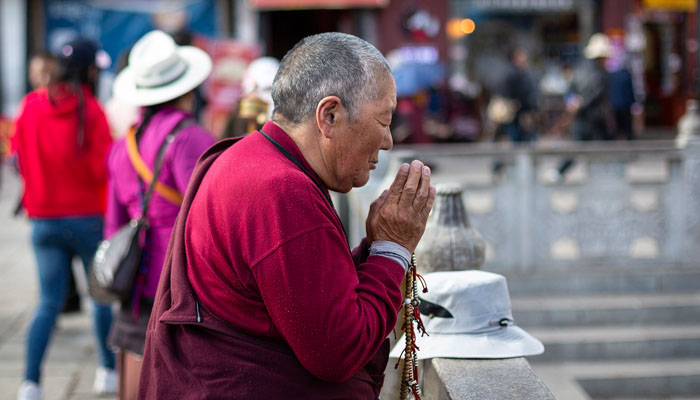 Most Tibetan people follow Tibetan Buddhism.
Most Tibetan people follow Tibetan Buddhism.What Language Do Tibetan People Speak?
The Tibetan language is the main language of the Tibetan people both in Tibet and among the Tibetan diaspora around the world. Classical Tibetan is the literary language used in Buddhist scriptures, religious texts, and historical records. Modern Tibetan, on the other hand, is the spoken language used in everyday communication.
Regional variations and historic influences have led to development of several Tibetan dialects spoken across the Tibetan Plateau and neighboring regions. Some dialects, such as Amdo Tibetan, spoken in parts of Qinghai, Gansu, and Sichuan provinces in China feature distinct pronunciation and vocabulary differences.
Other dialects such as Dzongkha, the official language in Bhutan, share many similarities with the Tibetan spoken in Lhasa, but have their own distinct grammars.
What are the Traditional Clothes Tibetan People Wear?
Tibetan traditional clothing is a reflection of the region’s unique climate, history and cultural identity. Most iconic is the chuba, a long robe often made of wool. Worn by both men and women, the chuba is often brightly colored with intricate patterns that very based on region and occasion. Women also wear a pangden over their chuba. It is a colorful apron-like sash that signifies a woman’s marital status and regional identity.
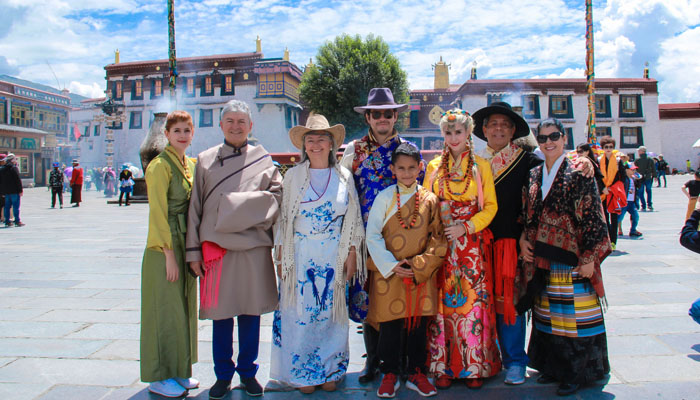 Tourists wear the traditional Tibetan clothing.
Tourists wear the traditional Tibetan clothing.Traditional clothing can vary by region and occasion. In Bhutan, women wear a bakhu, an ankle-length dress of woven fabric. On special occasions such as during the Tibetan New Year, Losar, and weddings, Tibetan people will wear their finest clothes and jewelry.
What are the Important Festivals of Tibetan People?
Tibetan culture is full of traditional festivals celebrated throughout the year. Losar, the Tibetan New Year, is one of the most important. Falling in February or March, it lasts for several days and includes rituals, prayers, feasting, and cultural activities.
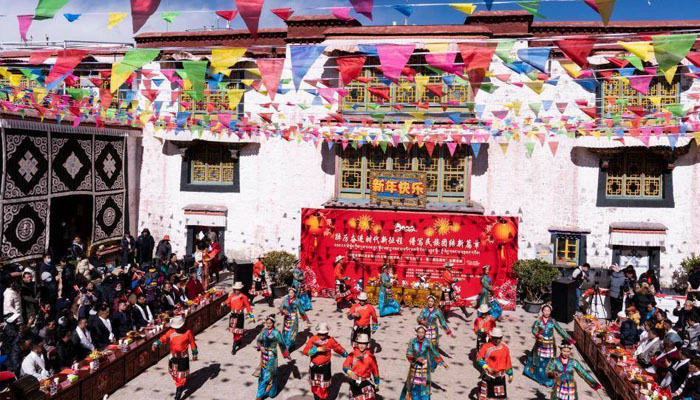 Tibetan people celebrate Tibetan New Year every year.
Tibetan people celebrate Tibetan New Year every year.The festival commemorates the birth, enlightenment, and death of Buddha, known as Saga Dawa is another very important celebration. It usually takes place in May or June and is considered an auspicious time for religious activities such as making pilgrimages, and performing acts of kindness.
Shoton is a festival celebrated in August and involves the unveiling of large Thangka, religious paintings. Known as the Yogurt Festival, it is marked with opera performances, traditional dances, and eating yogurt. Cham Dance Festivals take place throughout the year and are held at different monasteries and regions. The dances are performed by Monks and act as symbolic representations of Buddhist teachings, myths, and legends.
What are the Common Customs and Traditions of Tibetan People?
Tradition and spirituality are woven throughout the daily life and customs of Tibetan people. Right down to something as common as greeting a friend, the traditional greeting of "Tashi Delek," means "auspicious blessings." Local culture places a big emphasis on hospitality and guests can expect to be welcomed with food, tea, and other gestures of warmth.
Another important gesture of goodwill and friendship is the offering of a white silk scarf called a Khata. It's given during various occasions, such as welcoming guests, visiting monasteries, and expressing condolences.
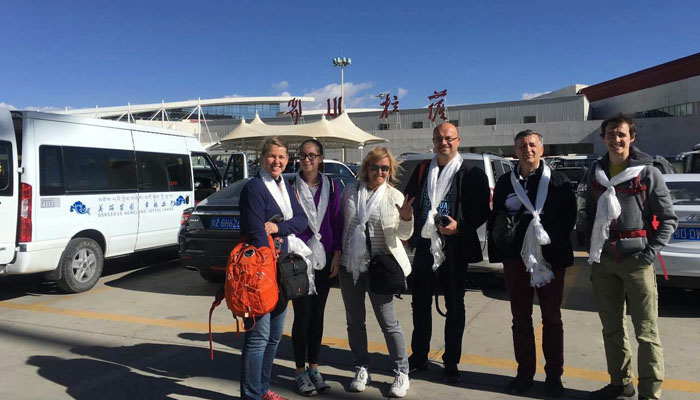 Our Tibetan travel guide welcomes tourists and gifts them Khatas at Lhasa Gongga Airport.
Our Tibetan travel guide welcomes tourists and gifts them Khatas at Lhasa Gongga Airport.Traditional spiritual practices are much in evidence during daily life. Prayer flags can be seen all over Tibet adorning landscapes, rooftops, and sacred sites. Inscribed with prayers and mantras, they are believed to carry blessings and prayers on the wind, spreading positivity and well-being.
Prostration is a commonly practiced gesture of devotion and reverence. It involves bowing down and touching the ground with one’s forehead and can regularly been seen during religious rituals, prayers, and while visiting sacred sites.
It is also common to see Tibetan people walking a Kora. The practice of circumambulating a sacred site as a way of paying homage, accumulating merit, and purifying negative karma.
Tips on Meeting Tibetan People when Touring Tibet
Some Tibetans are known for their warmth and friendliness towards foreign visitors, but there are some tips to take notice of when meeting locals during your Tibet tour. Cultural traditions that place a high value on kindness and community contribute to people who are naturally hospitable. Tibetans are also very proud of their cultural heritage and are happy to share their way of life with others.
In order to ensure positive interactions with local Tibetans make sure to be respectful. Learning greetings and a few basic phrases in the local language is a nice gesture that will be well appreciated by people you meet there.
Be respectful towards religious sites and people in traditional areas by dressing modestly, following any local guidelines, and speaking quietly when visiting monasteries or temples.
Also make sure to respect personal space and boundaries. Ask permission before taking photos of people, and be mindful of individual privacy when asking questions.
Conclusion
Tibetan culture and the way of life of local people is deeply connected to the landscape, history and spiritual traditions. The only way to truly learn about Tibetan culture is to visit the region and experience it first hand by taking in the sites and meeting the people there, but this guide will help you get ready in advance so you can get the most out of your time there.
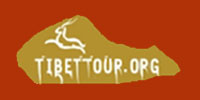
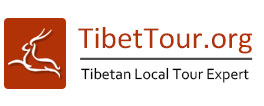


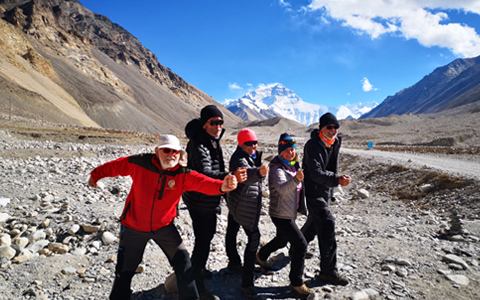
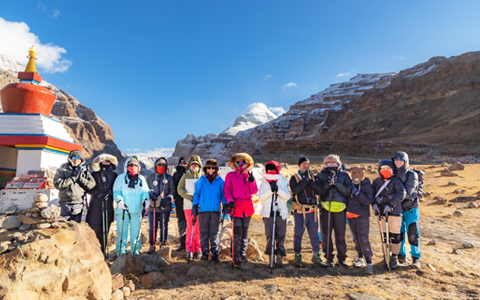
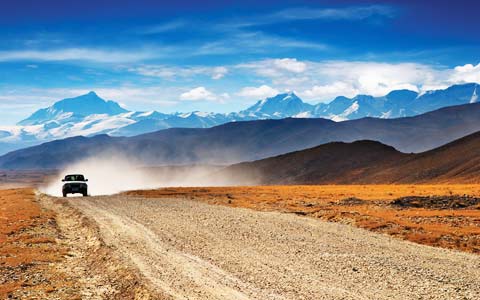
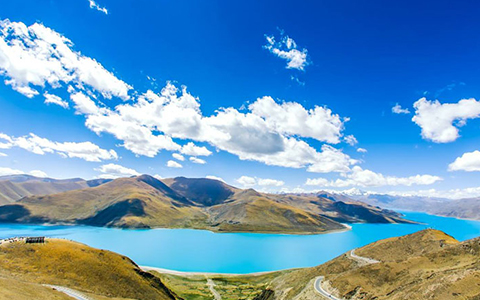
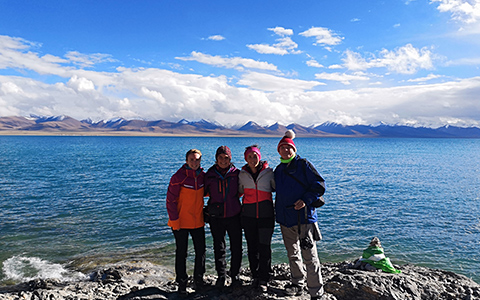
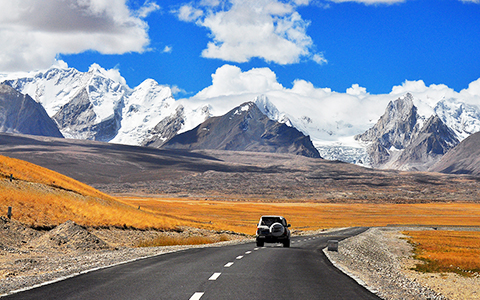
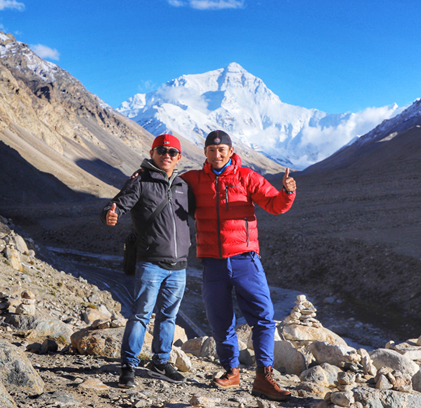
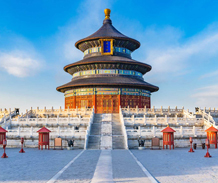

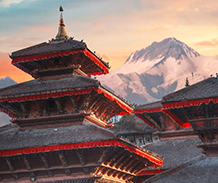
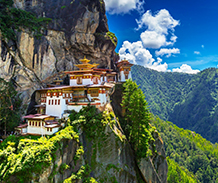

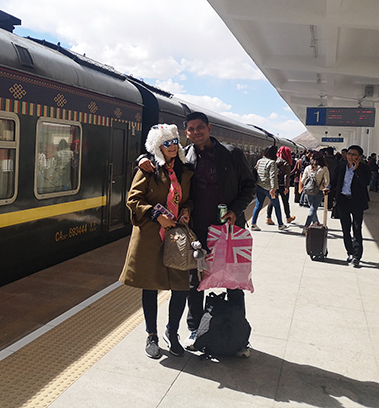
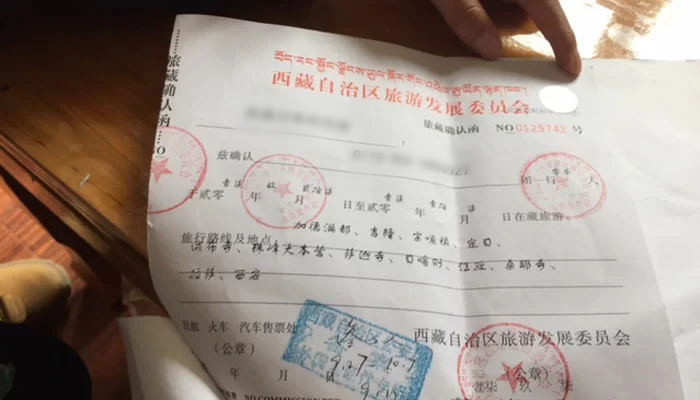
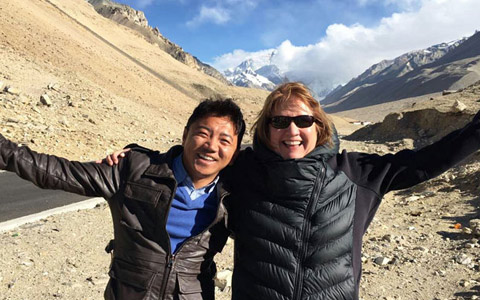
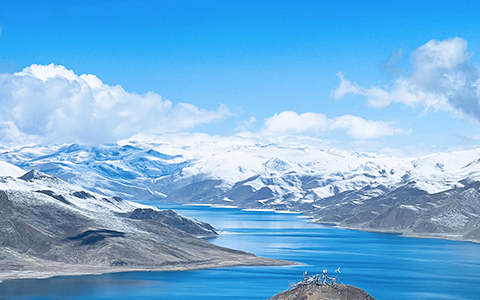
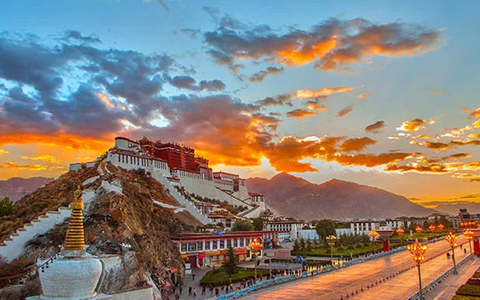
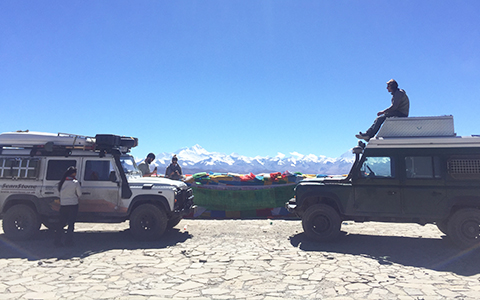



 Tibetan people have a distinctive appearance.
Tibetan people have a distinctive appearance.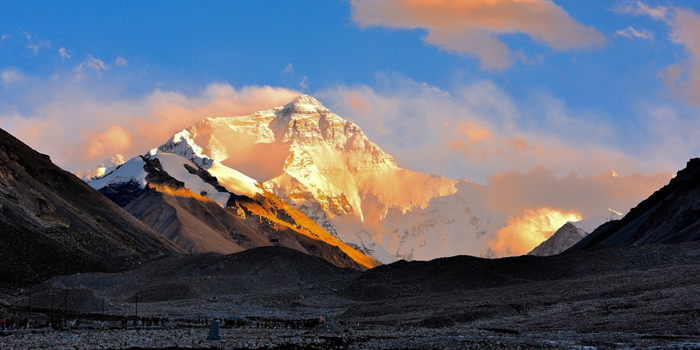
 Tibetan Plateau is where Tibetan people primarily live.
Tibetan Plateau is where Tibetan people primarily live. Tsampa and butter tea are common foods of Tibetan people.
Tsampa and butter tea are common foods of Tibetan people. Most Tibetan people follow Tibetan Buddhism.
Most Tibetan people follow Tibetan Buddhism. Tourists wear the traditional Tibetan clothing.
Tourists wear the traditional Tibetan clothing. Tibetan people celebrate Tibetan New Year every year.
Tibetan people celebrate Tibetan New Year every year. Our Tibetan travel guide welcomes tourists and gifts them Khatas at Lhasa Gongga Airport.
Our Tibetan travel guide welcomes tourists and gifts them Khatas at Lhasa Gongga Airport.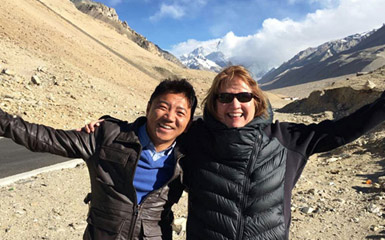
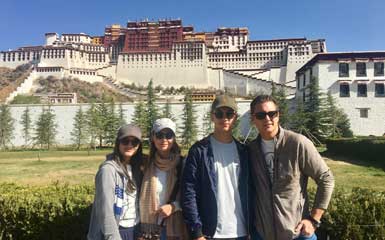
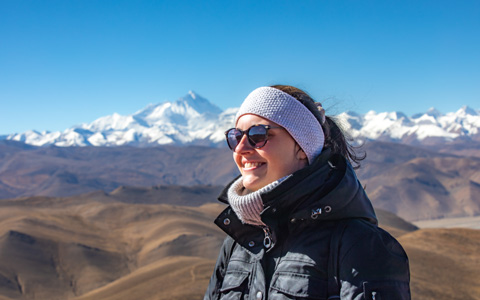
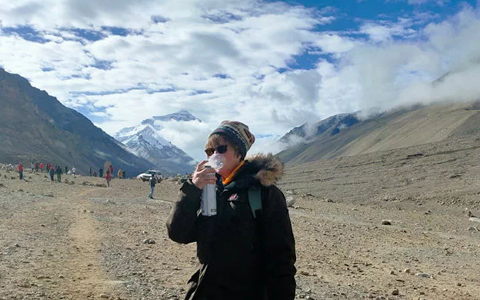
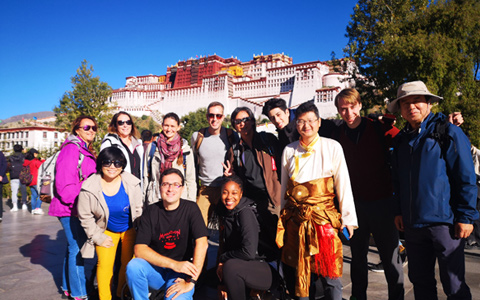
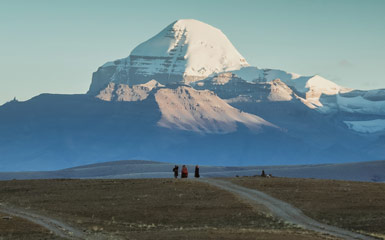

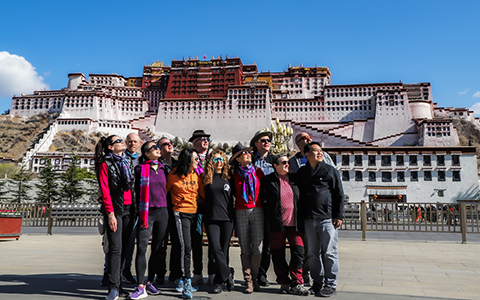

Ask a Quick Question